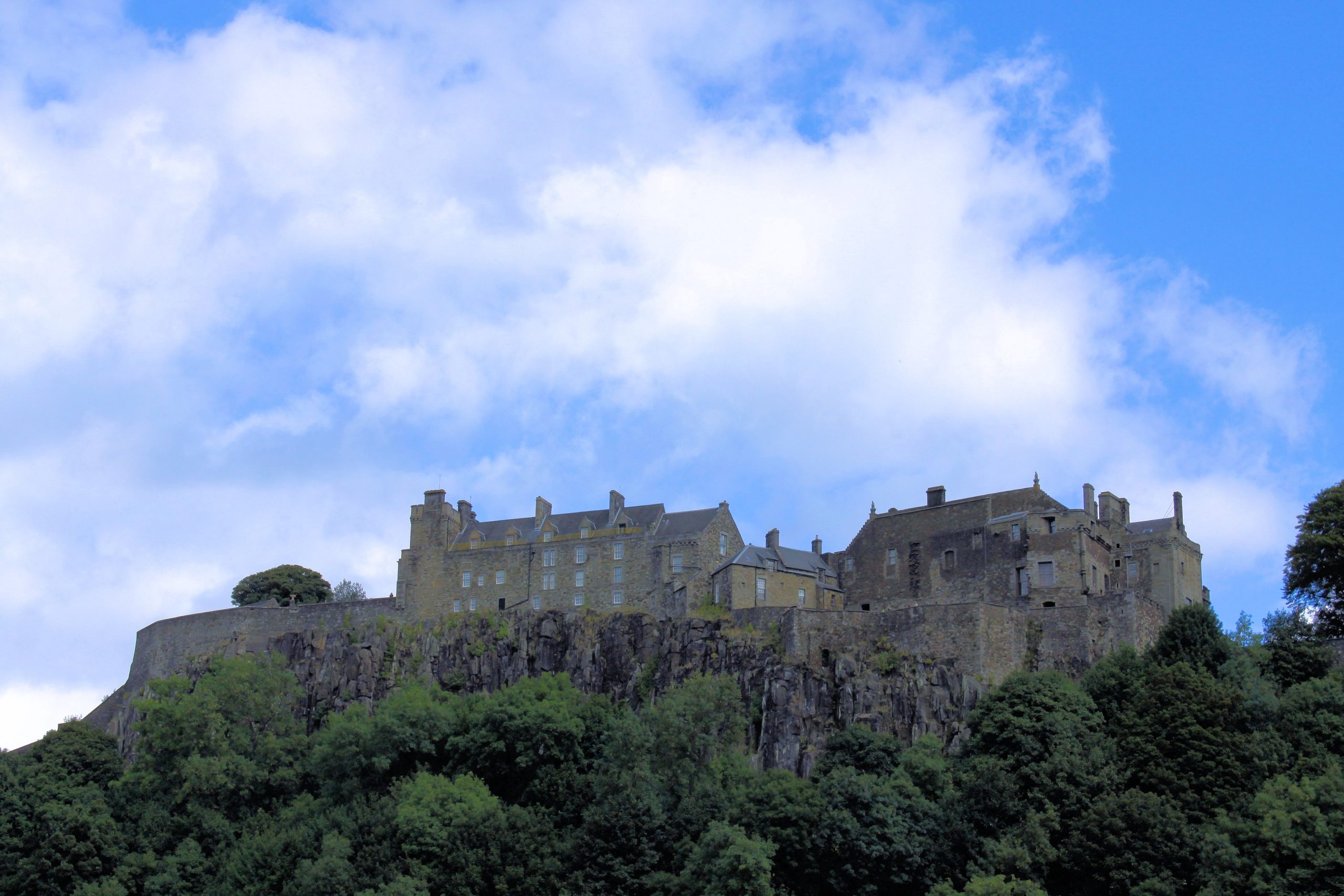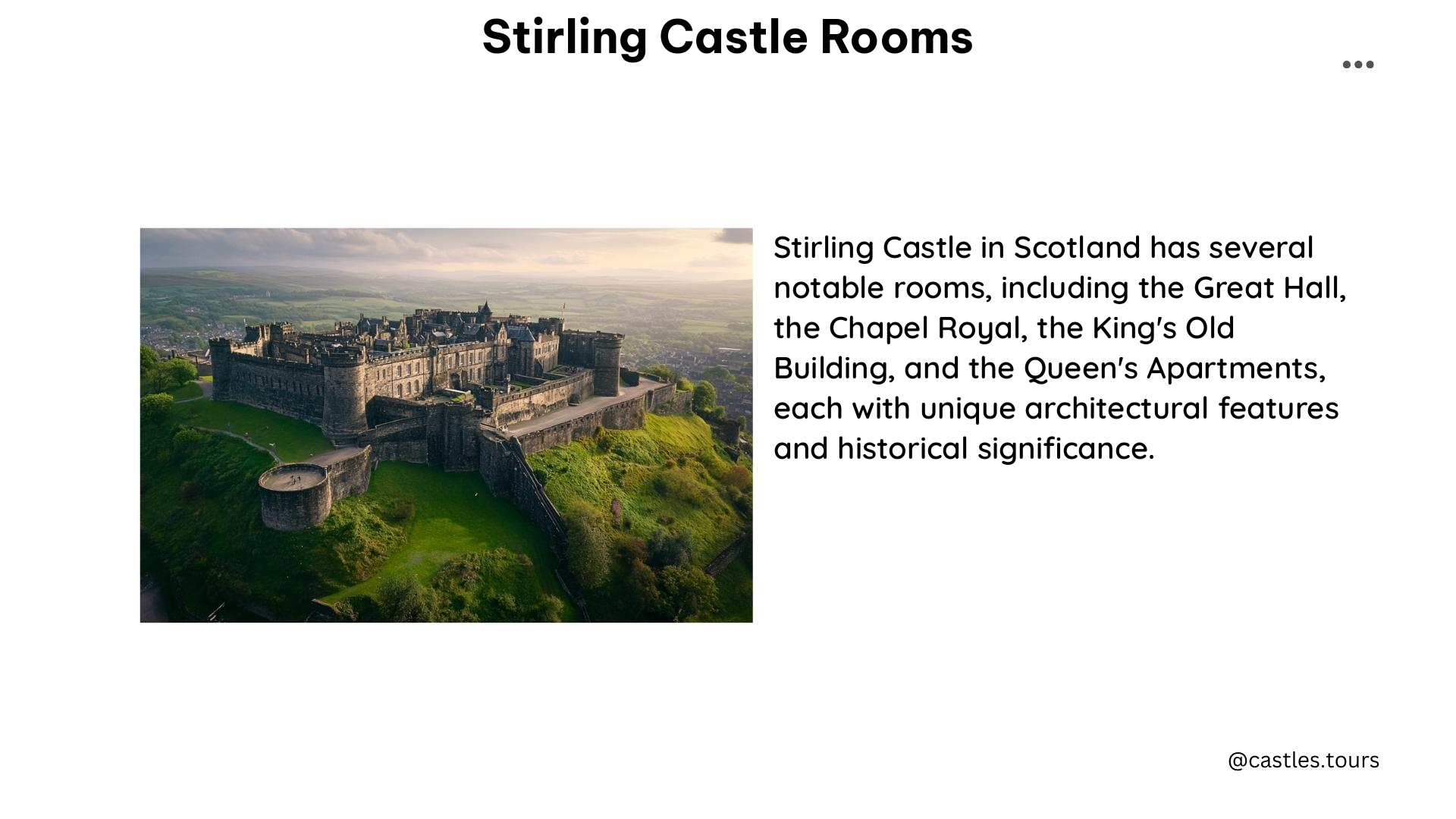Stirling Castle, a historic fortress in Scotland, has been a significant royal residence for centuries. The castle boasts an array of impressive rooms and structures, each with its own unique history and significance. From the grand Royal Palace to the intimate Bedchamber, the captivating rooms of Stirling Castle offer visitors a glimpse into Scotland’s rich royal past.
The Royal Palace

The Royal Palace at Stirling Castle is a true architectural marvel, showcasing the grandeur of Scotland’s royal heritage.
Outer Hall
The Outer Hall is a large, public room where various functions and events took place. This expansive space was often used for receptions, ceremonies, and other important gatherings.
Inner Hall
The Inner Hall is a smaller, more private room where the king or queen would receive their most trusted advisors. This intimate setting was where crucial business and political matters were discussed.
Bedchamber
The Bedchamber was a room where the king or queen would receive their closest confidants. This private space was where important decisions were made and sensitive discussions took place.
The Great Hall

The Great Hall at Stirling Castle is a true testament to the castle’s rich history and architectural prowess.
Banqueting Hall
The Banqueting Hall is the largest medieval banqueting hall in Scotland, completed in 1503 for King James IV. This impressive space features four pairs of tall windows at the dais end, where the king and queen would have sat.
Chapel Royal
The Chapel Royal at Stirling Castle is a stunning example of the castle’s religious significance.
Elegant Chapel
The Elegant Chapel was built in just seven months in 1593-4 for the baptism of Prince Henry. It was one of the first Protestant kirks in Scotland and the last royal building constructed at the castle.
Great Kitchens
The Great Kitchens at Stirling Castle were the heart of the castle’s culinary operations.
Royal Kitchen
The Royal Kitchen was where the finest food was prepared for the royal family and their guests. The kitchens were also responsible for baking daily bread for the castle’s servants.
Queen Anne Gardens
The Queen Anne Gardens at Stirling Castle offer a serene and picturesque respite from the castle’s grand interiors.
Royal Garden
The Royal Garden may have existed since the 1400s and was later converted into a bowling green in the 1620s. Today, it features a 200-year-old beech tree and a family trail in the Unicorn Garden.
Stirling Heads Gallery
The Stirling Heads Gallery at Stirling Castle is a unique and fascinating attraction.
Medieval Carvings
The gallery houses a collection of 16th-century oak medallions carved with images of kings, queens, nobles, and mythological figures, offering a glimpse into the castle’s rich artistic heritage.
Argyll and Sutherland Highlanders’ Regimental Museum
The Argyll and Sutherland Highlanders’ Regimental Museum at Stirling Castle is a must-visit for history enthusiasts.
Military Museum
The museum showcases the history and artifacts of the Argyll and Sutherland Highlanders regiment, with exhibits on various conflicts and battles.
Argyll’s Lodgings
Argyll’s Lodgings at Stirling Castle is a beautifully restored renaissance townhouse.
Renaissance Townhouse
This historic building features both basic servants’ areas and luxurious rooms for the owners, including an early toilet chamber with a velvet-covered toilet seat.
Stirling Castle’s captivating rooms and structures offer visitors a unique and immersive experience, allowing them to step back in time and explore the rich history and grandeur of Scotland’s royal past.
References:
– https://www.secret-scotland.com/place/stirling-castle
– https://www.undiscoveredscotland.co.uk/stirling/stirlingcastle/palace.html
– https://www.historicenvironment.scot/visit-a-place/places/stirling-castle/
– http://www.instirling.com/stirling_castle_palace.html
– https://www.alamy.com/stock-photo/stirling-castle-interior.html
